

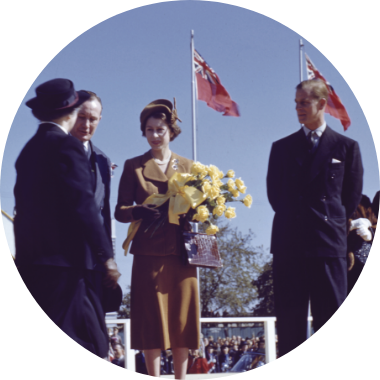
Princess Elizabeth makes her first official visit to Canada, representing her ailing father, King George VI. All through the trip, she carries accession documents with her, in case her father should die while she is away. Elizabeth did not inherit the throne until early the following year.
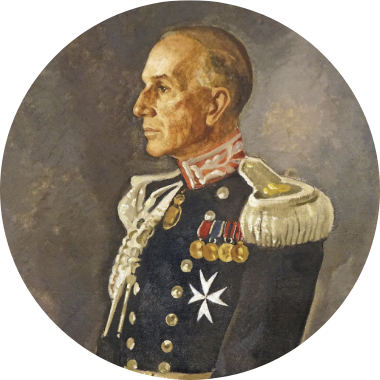
Queen Elizabeth ascends the throne only days after Vincent Massey’s appointment as Governor General of Canada, effectively becoming the first monarch to be represented by a native-born Canadian. Previous vice-regents had usually been British aristocrats or even members of the monarch’s family. Since 1952, all governors general have been Canadians.
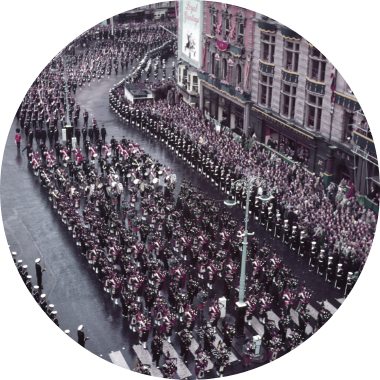
Canada’s prime minister, Louis St. Laurent, participates in the coronation procession and ceremony and sees Elizabeth entering Westminster Abbey in her glorious coronation gown. At her suggestion, Canada’s maple leaf is embroidered on the dress in green silk, gold thread and crystal beads as part of a wreath of Commonwealth emblems.
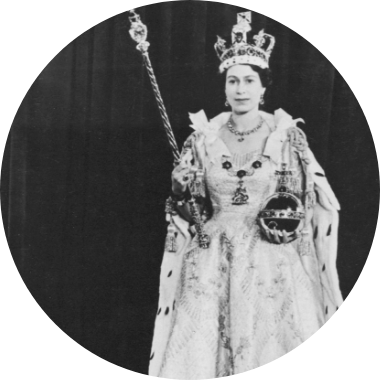
After more than two centuries of rule by the King or Queen of Great Britain, Canada finally has its own Queen. At her Coronation, Queen Elizabeth II becomes the first monarch to be proclaimed Queen of Canada.
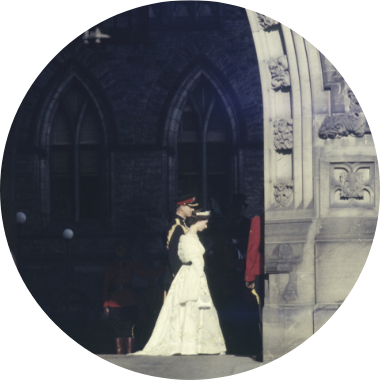
The Queen, touring Canada for the first time as Monarch, wears the coronation gown to open Canada’s 23rd Parliament. The visit makes history as the Queen’s very first broadcast anywhere in the new medium of television.
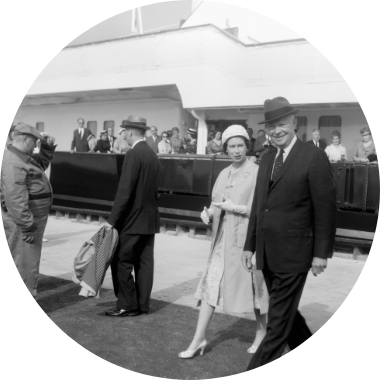
American president Dwight D. Eisenhower joins the Queen aboard the Royal Yacht Britannia for the opening of the St. Lawrence Seaway, a system of canals designed to open the Great Lakes to sea-going vessels. As the yacht proceeds westward to Detroit, Elizabeth is welcomed everywhere as the “Queen of Canada.”
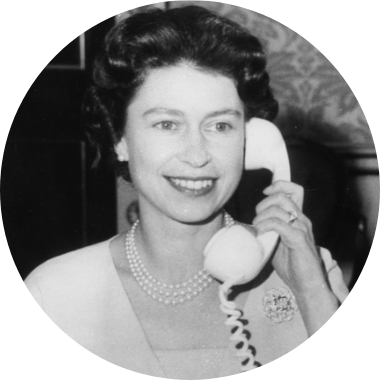
The Queen and Canadian Prime Minister John Diefenbaker inaugurate the transatlantic phone cable with a call between Buckingham Palace and a packed convention hall at the Château Laurier in Ottawa. The groundbreaking 4,000-kilometre cable ran under the sea from Scotland to Grosses-Roches, Que.
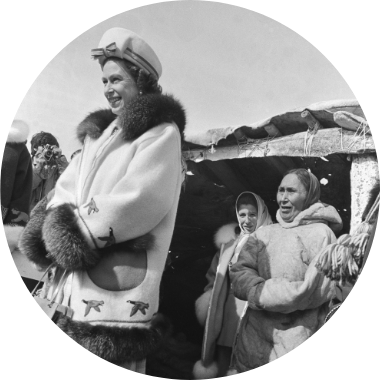
The Queen tours Canada not only to mark the centennial of Manitoba and of the Northwest Territories but also, with her presence in the North, to help Canada assert its sovereignty over the Arctic. In a historic first for royalty, she travels north of the Arctic Circle to Inuvik and Tuktoyaktuk, N.W.T.
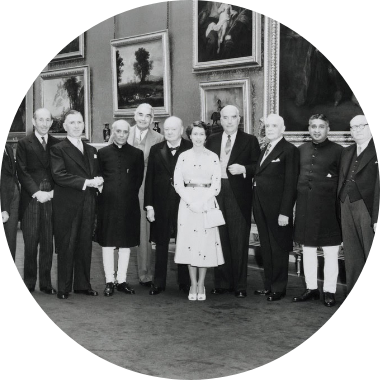
The Queen attends her first Commonwealth Heads of Government meeting in Ottawa (she attended every meeting afterwards until 2011). The modern, post-imperial Commonwealth of Nations was born in 1949 and is made up of equal, independent states with roots in the British Empire.

The Queen visits Montreal to open the XXI Olympiad. With her whole family there to watch, Princess Anne competes for Great Britain in the equestrian three-day event. She rides a horse called, appropriately, Goodwill. The games mark the first and only time that Canada has ever hosted the Summer Olympics.
A portrait of the Queen and Prince Philip, the work of an iconic Canadian painter, is unveiled at Rideau Hall. Artist Jean Paul Lemieux explains that the flat, rather blunt style was a deliberate decision to distance the work from formal royal portraiture and to give it a distinctively Canadian character.
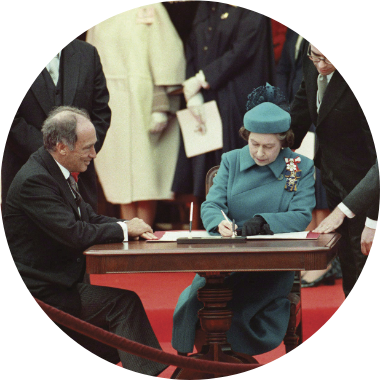
The Queen meets with Prime Minister Pierre Trudeau on Parliament Hill in full view of the Canadian people to proclaim the new Constitution. The Constitution Act not only transformed the founding legislation of Canada into Canadian law; it also entrenched the monarchy within the Canadian system.
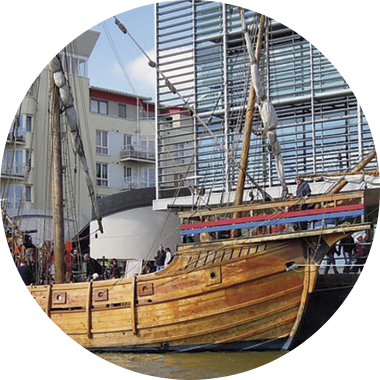
Many of the Queen’s tours of Canada have been linked to celebrations of historic anniversaries. On this occasion, the Matthew, a replica of the English ship that brought John Cabot to Newfoundland in 1497, sails into Bonavista harbour in Newfoundland 500 years later, with the Queen in the audience.

Ninety years after Canadians made military history by capturing Vimy Ridge, the Queen lays a wreath and speaks at the rededication of the restored Canadian National Vimy Memorial. “In capturing this formidable objective,” she says, “the Canadian Corps transformed Vimy Ridge from a symbol of despair into a source of inspiration.”
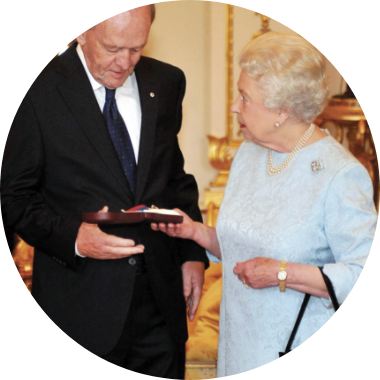
The Queen appoints former Prime Minister Jean Chrétien to the Order of Merit, an honour awarded to only four Canadians throughout history. The honour is restricted to 24 living members at any one time, given as a personal gift from the monarch to recognize “exceptional distinction.”

The Queen makes her 22nd and final official tour of Canada, stopping in Halifax, Toronto and Winnipeg. The Queen has made more visits to Canada than to any other Commonwealth nation, has travelled to every province and two territories, and has experienced Canada in almost every month of the year, excepting January and February.
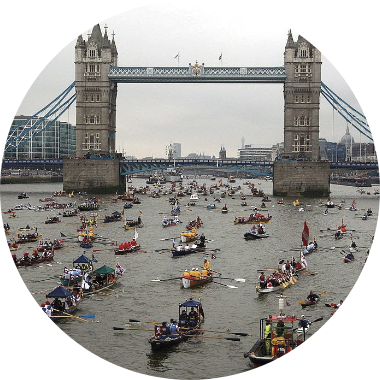
Canada is one of 50 Commonwealth nations participating in a historic celebration of the Queen’s Diamond Jubilee in London. Among 1,000 vessels paying tribute to Elizabeth in the Thames Diamond Jubilee Pageant are two Canadian boats: a voyageur canoe flying a Canadian flag and a dragon boat paddled by 14 Canadian survivors of breast cancer.
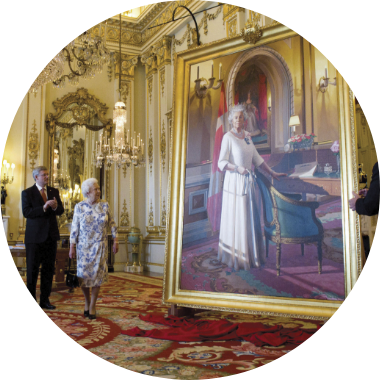
The Canadian Diamond Jubilee portrait of the Queen by Canadian artist Phil Richards is unveiled at Buckingham Palace in the presence of Her Majesty and Canadian Prime Minister Stephen Harper. The portrait is then returned to Rideau Hall where Governor General David Johnston assures the Queen “we’ll find a spot for it.”

Governor General David Johnston presents the Queen with a sapphire snowflake brooch marking 65 years of service and honouring her Sapphire Jubilee. The snowflake, designed with Canada’s northern geography in mind, features rare Beluga sapphires from Canada’s only known deposit of sapphires, on Baffin Island, as well some 400 Canadian diamonds.

In the 70th year of her reign, Queen Elizabeth is the second longest reigning monarch in history and a symbol of the continuity and stability of our state. King Louis XIV of France has a narrow lead as longest-reigning monarch at 72 years (1643-1715), but he began his rule at age five.








